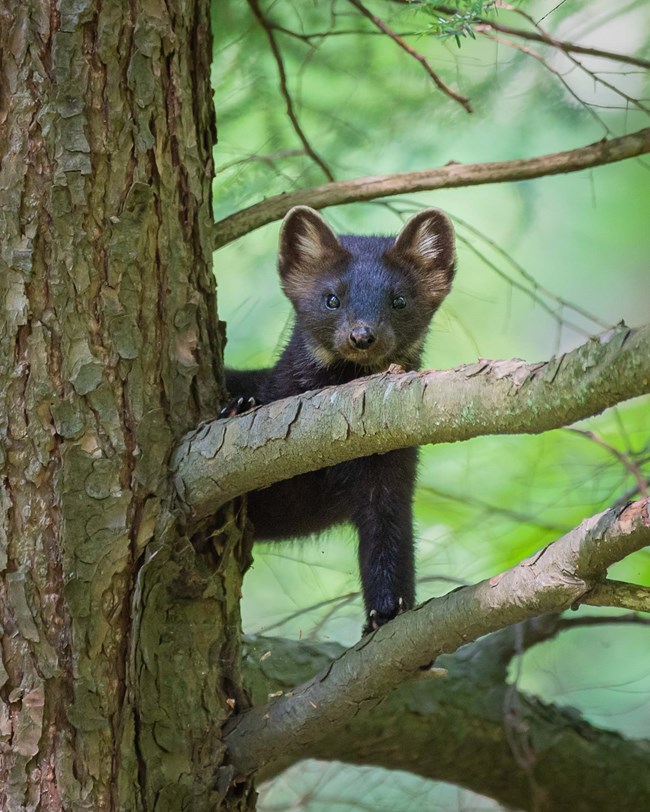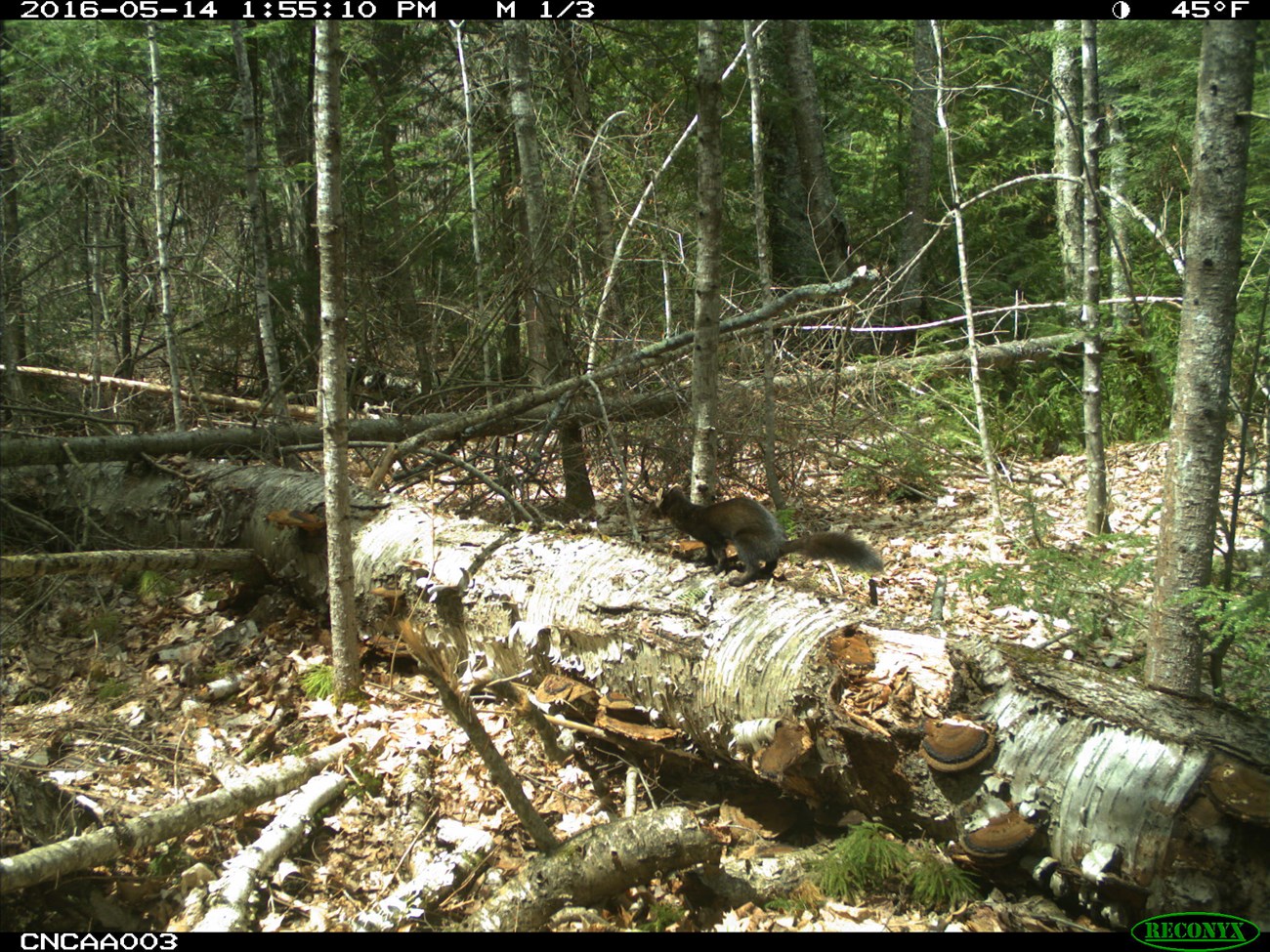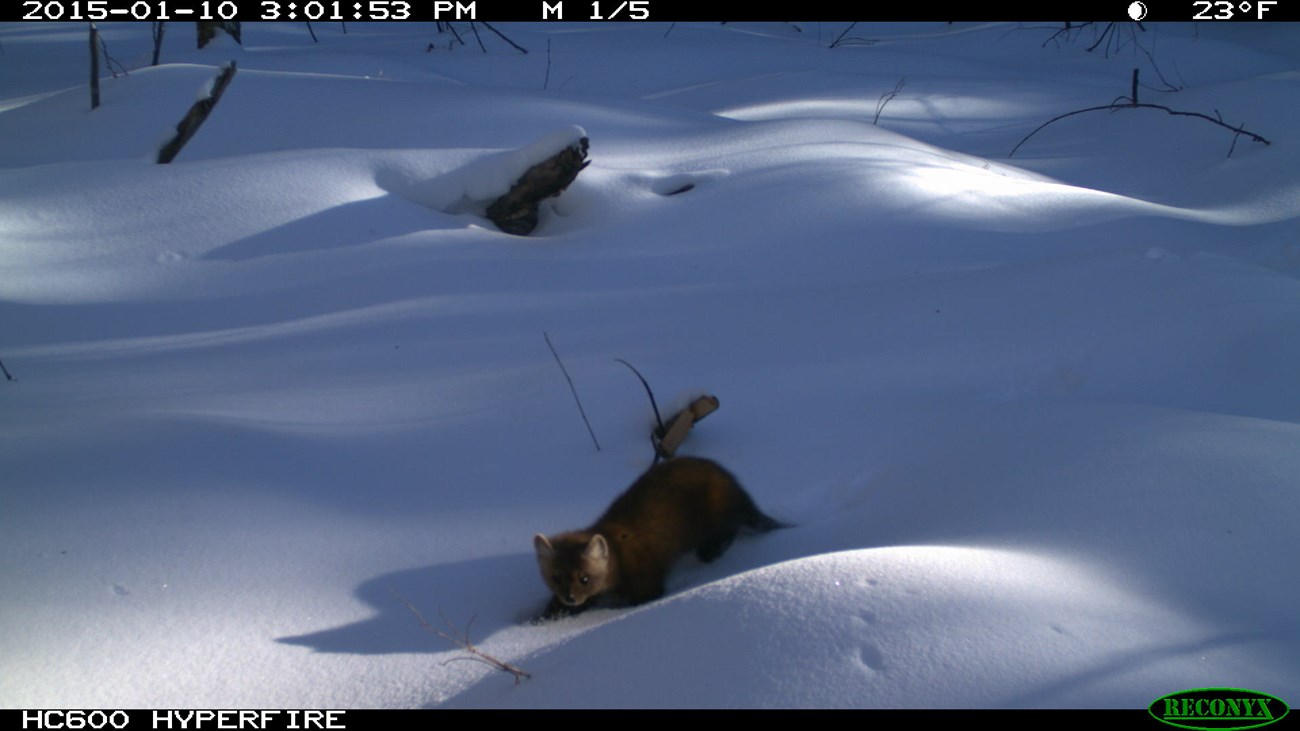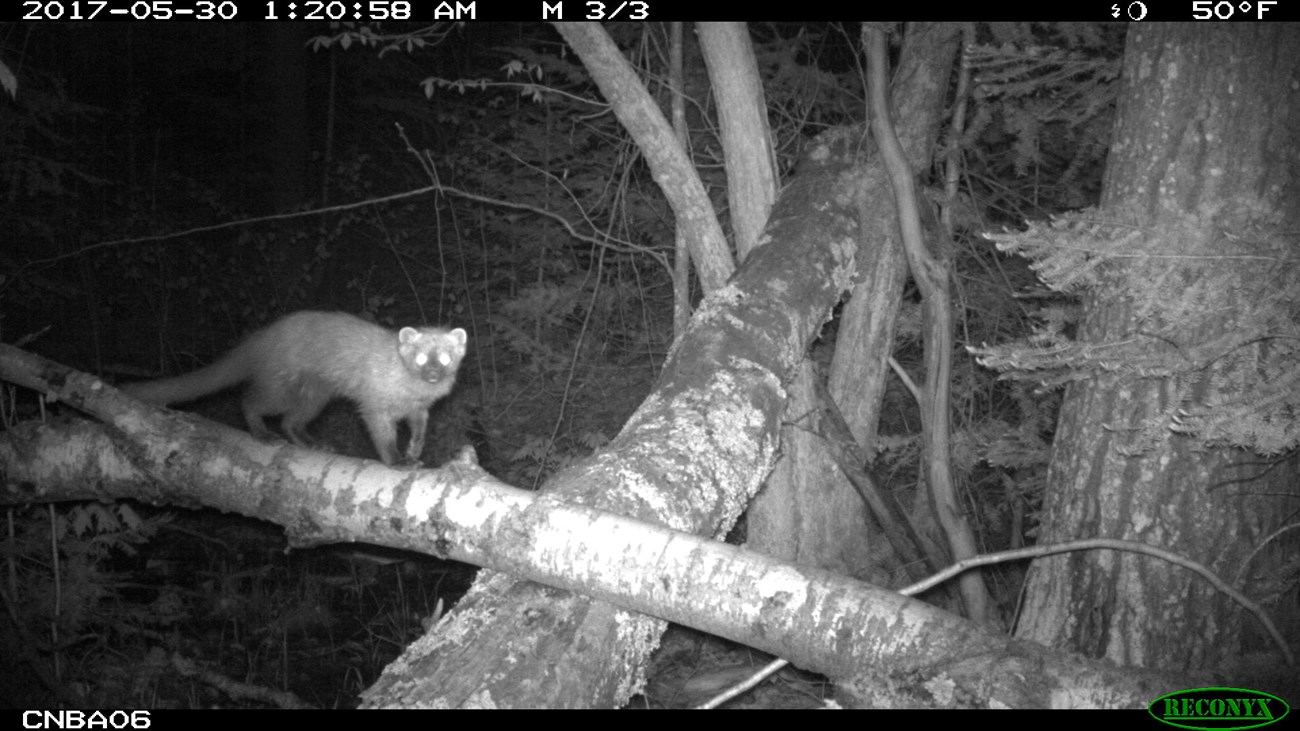Last updated: December 1, 2023
Article
American Marten on the Apostle Islands

NPS photo/M. Van Valkenburg
What is an American marten?:
American martens (Martes americana) are a small rare species of weasel that live in mature forest stands in the upper Midwest. These animals are state endangered, with animals only existing in small populations on the northern limits of their previous range. American martens are often confused with Fishers (Martes pennati), but can be identified by their smaller size and proportionally larger ears.
History of American Marten in and around the Apostle Islands:
American marten were thought to have been extirpated (locally extinct) from the area in the 1930’s due to intense logging and development leading to significant habitat degradation and loss. Ten pacific marten were introduced to the islands from Montana and British Columbia in the 1950’s. This reintroduction effort failed, however, with the last marten being detected on the islands in 1969. On the mainland, additional reintroduction efforts took place in the nearby Chequamegon-Nicolet National Forest between 1970 and 2010, with some success creating a network of marten populations across northern Wisconsin and the upper peninsula of Michigan. These martens were brought in from Ontario, Canada.

NPS photo
Rediscovery of American Marten:
In 2014 an American marten was observed on Manitou Island. This discovery led to a photograph of an island marten from 2010 being found. Research projects with U.W. Madison and Northland College were soon underway, with goals of pinpointing which islands had American marten and identifying where the marten populations on the islands came from. These projects utilized a variety of techniques including scat and hair collection to extract DNA, and remote camera usage to locate marten. Results of these research projects have been surprising. As of fall 2021, American marten have been located on Bear, Cat, Oak, Ironwood, Manitou, Otter, Outer, Rocky, Sand, and Stockton Islands, with the first marten being seen on Oak and Ironwood Islands in 2021. Results from the 2017 hair and scat sampling indicated that 17 marten were on Stockton, 8 marten were on Cat, 7 marten were on Manitou, 6 marten were on Rocky, and 5 marten were on Otter.

NPS photo
Genetic research has indicated that the marten population within the park naturally dispersed to the area from a closely related population in upper Michigan and are not descendants of the translocated Pacific marten group from the 1950’s. This natural recolonization is thought to have happened rather recently (~20 years ago). Forty three island marten were identified through the project, with most marten living in close proximity to immediate family members. However, some marten have dispersed to other islands or the mainland, providing evidence that the higher density island populations could be serving as a source population for the mainland. This source population would then support and provide some genetic diversity to lower density and declining populations outside the park. The higher population density within the park is hypothesized to be linked to relatively higher forest complexity, higher prey availability, and lower competition with other predators.

NPS photo
Moving Forward:
These recent discoveries indicate that the Apostle Islands can serve as a refuge for American marten, providing them with preferable habitat during a changing climate. Apostle Islands National Lakeshore also provides protection from development and other disturbances within park boundaries. Continued research will be necessary to monitor the expansion and status of Apostle Island’s new marten population, as limited genetic flow from the mainland could lead to negative repercussions for the small island population over time.
Written By: Kassandra Arts (kassandra_arts@nps.gov)
For more information:
Peggy Burkman (Peggy_Burkman@nps.gov)
